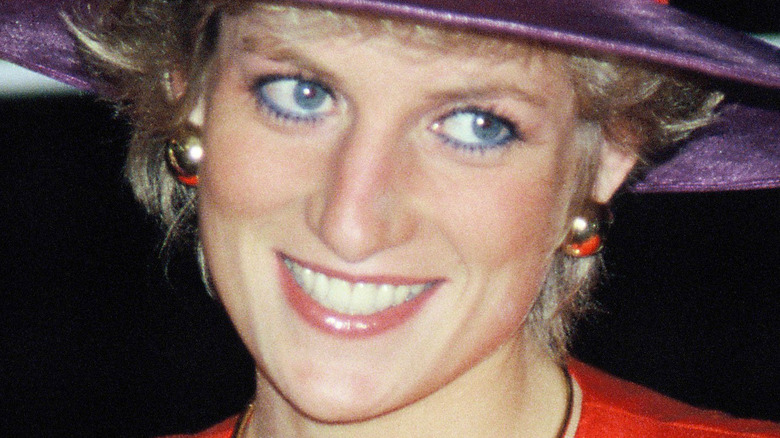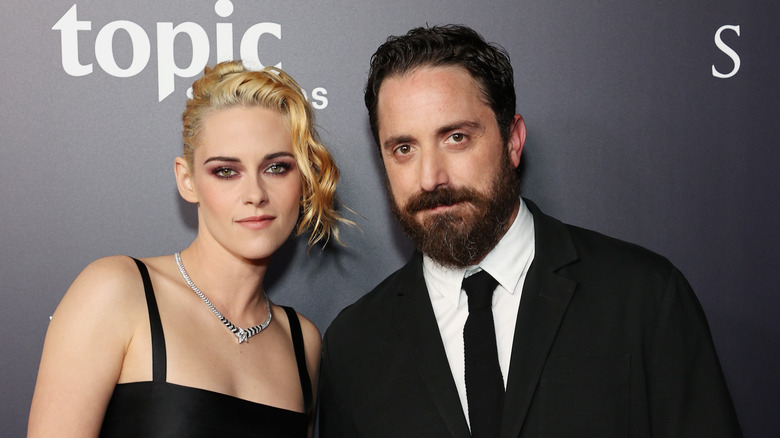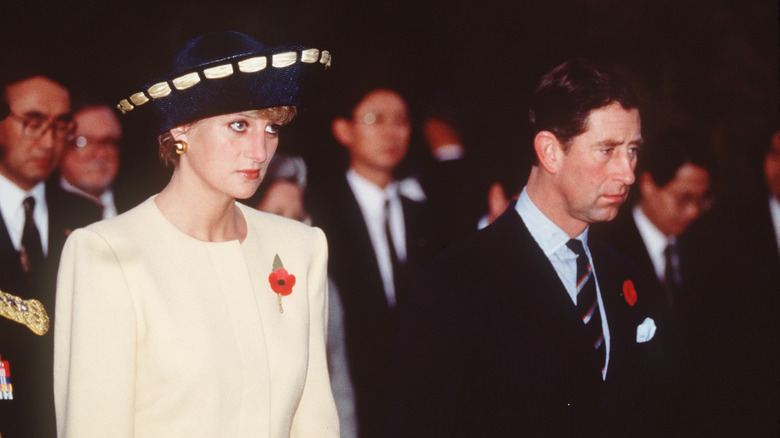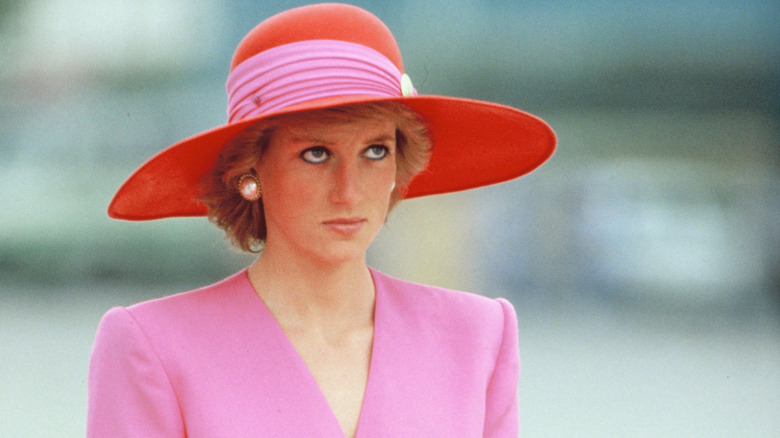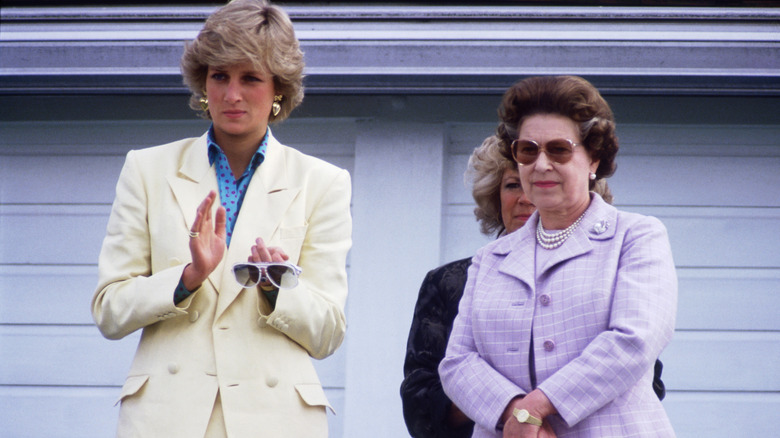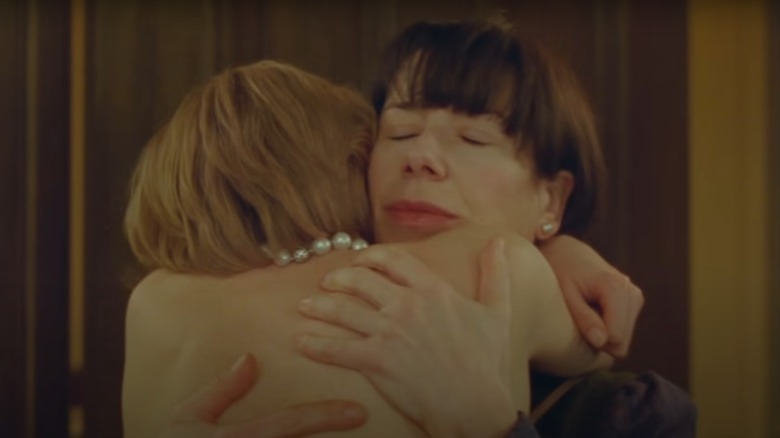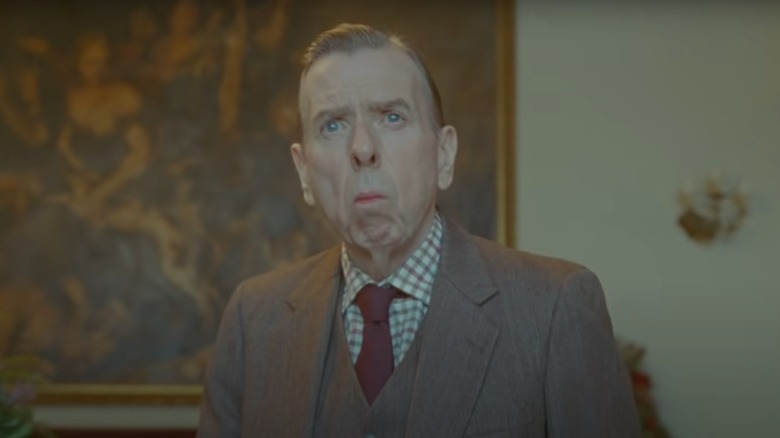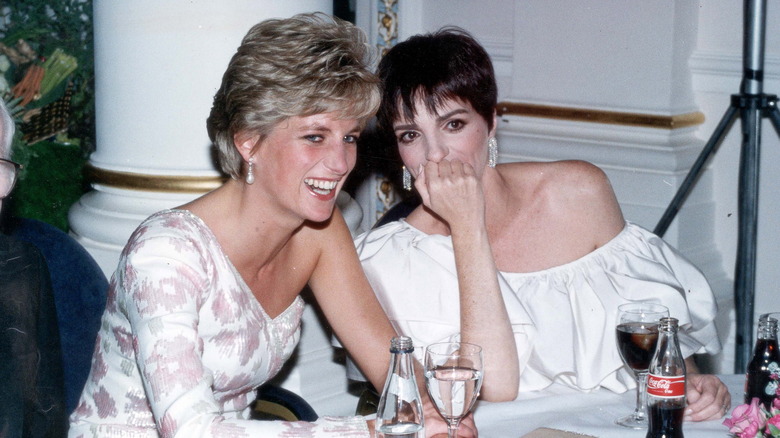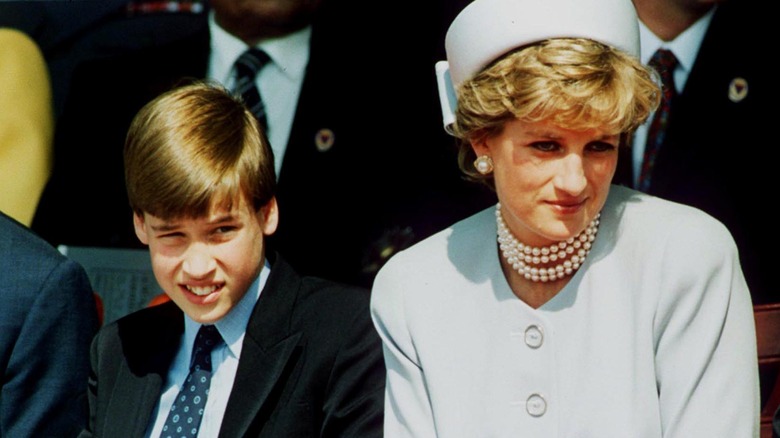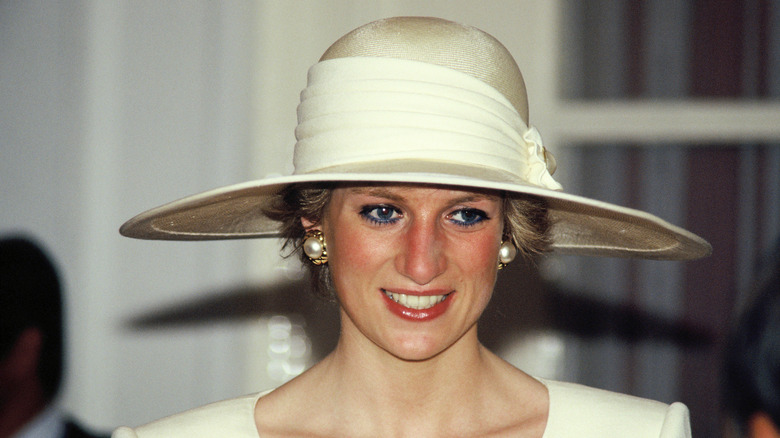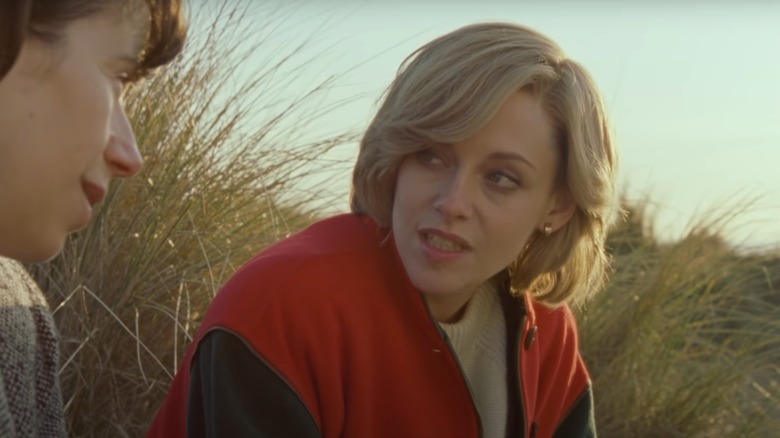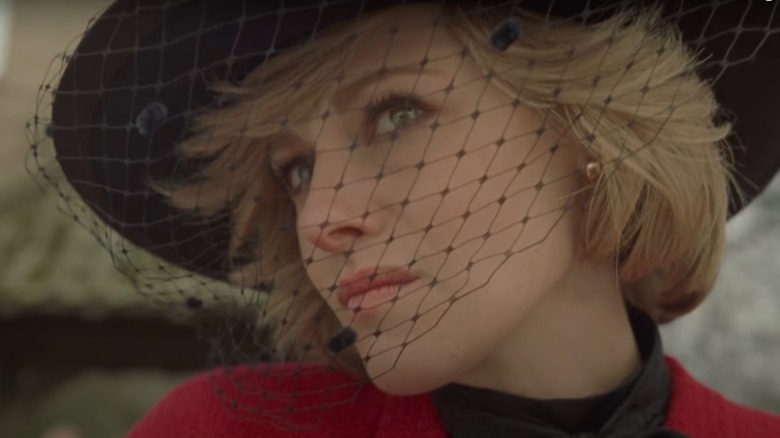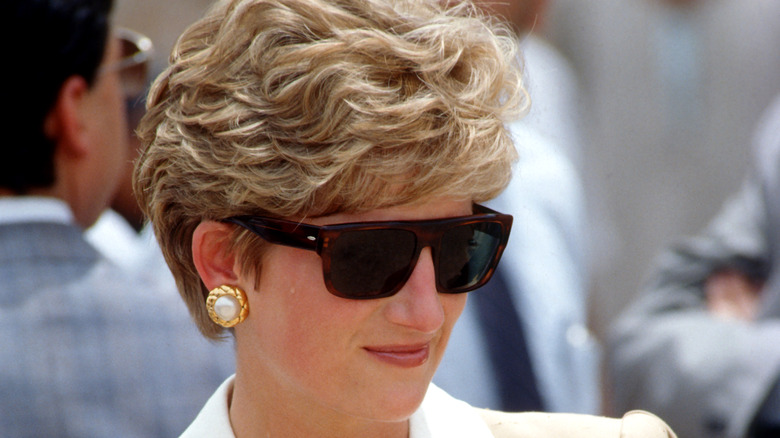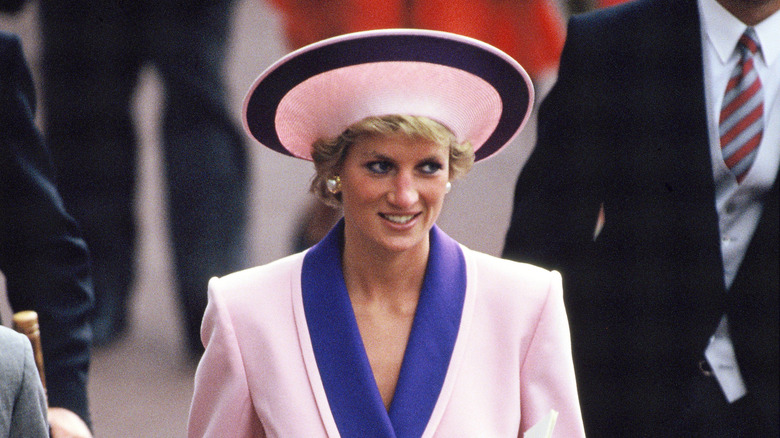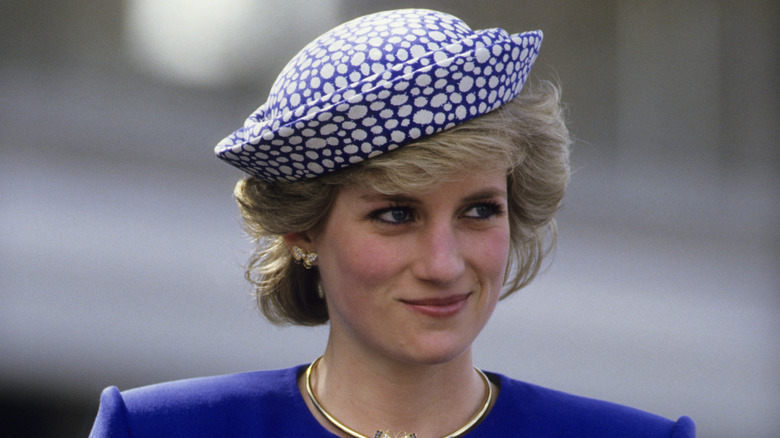What Spencer Got Wrong About Princess Diana's Story
When Diana Spencer entered the royal purview in the late 1970s, she instantaneously captured everyone's attention. "Shy Di" was just a teenager, but her stunning features and sweet demeanor made her the shining star of the royal romance. By the time she and Prince Charles got married in 1981, Princess Diana was a bona fide star, followed by the United Kingdom's paparazzi at all hours of the day. Of course, Diana and Charles' romance was doomed from the start, and the princess suffered from a number of heartbreaking experiences along the way. And while she emerged as a strong, independent woman following her divorce in 1996, her life was tragically cut short after suffering fatal injuries in a car accident just a year later.
Since that fateful day, Diana's legacy has only continued to grow, turning her into something of a legend. As such, her story has been embodied by a number of different film and television adaptations, but no era of Diana biopics has rivaled the 2020s. From Emma Corrin's portrayal of the princess in "The Crown" to Kristen Stewart's riveting performance in "Spencer," Diana's story has played out on both the small and big screens. But was the latter adaptation accurate? Here's what "Spencer" got wrong about Princess Diana's story.
The director of the film intentionally labeled the story a 'fable'
Diana Spencer was brought to life on screen once again in the film "Spencer," released in November 2021. The film, starring Kristen Stewart as the titular role, is set over a Christmas weekend in the early 1990s, and follows Diana as she navigates a rather turbulent stay with the royal family amid her deteriorating marriage to Prince Charles. While some viewers might have believed that the film is a historical drama, rather than just a drama, director Pablo Larraín made it clear from the opening credits that the film is not intended to be an accurate retelling of events.
As noted by NPR, "Spencer" opens with the following message — "A fable from a true tragedy" — indicating from the very beginning that historical accuracy was not on the minds of the film creators or visionaries. NPR detailed in its review of the film that while "Spencer" takes into account a "rough outline" of the princess' union to Charles and the royal family members with whom she interacted heavily at the time, "there's little reason to believe this story is literally true." Rather, as NPR concluded, the film is only "meant to feel true," giving viewers a more nuanced understanding of the internal struggles that Diana faced throughout her life.
Diana and Charles didn't separate until 1992
Set over a Christmas weekend in 1991 (via Vanity Fair), "Spencer" is not a film that characterizes Diana's entire life, but rather is a closely focused portrayal of just a few days in one of the last years of her time as a royal. But as noted by NPR, the weekend in question is an "imagining" rather than a recreation of actual events — calling into question the accuracy of the film.
Firstly, in the dramatic biopic, Diana is separated from Charles, but is not yet divorced. While the film depicts the separated couple and their two young sons, History noted that the couple didn't actually separate until December 1992, a year after the film's time frame. Secondly, throughout the film, Diana "realizes the depth of her own despair and decides to pursue her freedom," as characterized by NPR. But in actuality, a number of different events in 1992, not 1991, forced Diana and Charles to go their separate ways. As noted by Biography, events including the release of Andrew Morton's 1992 biography about Diana, as well as the "Camillagate" phone call scandal, eventually put the couple in a fractured situation that they couldn't avoid any longer.
The film got Diana's experience with an eating disorder wrong
Trigger warning: disordered eating.
One of the most grueling aspects of "Spencer" is Diana Spencer's experience with disordered eating. As noted by History vs Hollywood, Diana did have a well-documented history with bulimia, but the timing of the film got her recovery all wrong. In the movie, character Major Alistair Gregory (played by Timothy Spall) insists on weighing Diana after she arrives at Sandringham House for the 1991 Christmas weekend. The implications surrounding the scene "implies this was done to track Diana's eating disorder," according to History vs Hollywood. But in reality, Diana was in recovery by this point in real life, an aspect that the film gravely misses.
As noted by NPR, "Spencer" dabbles with Diana's eating disorder, her history with self-harm, and an acute sense of paranoia, but while the late princess did experience these tragedies, she was also starting to overcome these by the early 1990s. As reported by Rolling Stone, Diana began recovering from her eating disorder in the late 1980s, not the early 1990s, as she had a change of values as she healed. "I suddenly realized what I was going to lose if I let go, and what was worth losing," Diana recalled in "Diana in Her Own Words" (via Elle).
Additionally, weighing guests when they arrived to celebrate Christmas and when they left was reportedly a royal family tradition, a way to see how much everyone indulged.
If you are struggling with an eating disorder, or know someone who is, help is available. Visit the National Eating Disorders Association website or contact NEDA's Live Helpline at 1-800-931-2237. You can also receive 24/7 Crisis Support via text (send NEDA to 741-741).
The dynamic between Diana and Queen Elizabeth missed the mark in the movie
Diana Spencer had a complicated and often tense relationship with Prince Charles — many of us already know this — but what was her relationship with Queen Elizabeth like? As far as the film "Spencer" is concerned, the relationship was fraught with heartbreaking conversations. As noted by History vs Hollywood, one scene in the film depicts Diana and Queen Elizabeth having breakfast together. The queen comments on how many photos are taken of the budding princess, before saying, "The only portrait that matters is the one they put on the 10-pound note. When they take that one, my dear, you understand that all you really are is currency."
Such a comment was devastating to say the least, but the outlet was quick to point out that this very scene goes to show that the film "is not historically accurate." Rather, Diana's real relationship with Queen Elizabeth was far more distant, as characterized by Andrew Morton in his 1992 biography, "Diana: Her True Story," via Tatler. The relationship between the two women was "formal," and Diana more or less "kept her distance," suggesting that such a conversation could've never happened between the two of them like it did in the film.
The bond Diana had with her dresser in Spencer was not exactly accurate
While many of us are aware of the struggles that Diana Spencer faced throughout her life, the film "Spencer" took some liberties when it came to the portrayal of the princess' anguish. As noted by NPR, Kristen Stewart's Diana develops a deep bond with the character Maggie, played by famed actress Sally Hawkins. Maggie serves as a dresser for Diana, but she also provides emotional and physical comfort and safety for the princess. The character of Maggie is described as Diana's "only friend," someone that she "clings" to throughout the Christmas weekend.
While it's true that real-life Diana bonded with dressers and people who worked as household staff, the relationship that was forged on-screen between Stewart and Hawkins is partially inaccurate. One of Diana's real dressers, Jacques Azagury, spoke to the Daily Mail about his interactions with the princess, and the bond he recalled was entirely different than an emotionally fraught relationship. "My favorite memory of Princess Diana was her presence," he said, "Another great memory was the sheer fun we had together, especially when it came to choosing her next look."
Spencer's Major Alistair Gregory was entirely made up
It's no secret that Diana Spencer was controlled in a number of ways by the royal family and its structures. As noted by History, the princess was reportedly very nervous that "The Firm" was trying to control her every move — in part because of Prince Charles' ongoing relationship with Camilla Parker-Bowles — and at one point in time, the princess even thought that the palace was trying to "sedate" her. But unlike the film "Spencer," real-life Diana didn't have a specific member of the staff watching every little thing she did. Meanwhile, Kristen Stewart's Diana had Major Alistair Gregory (played by Timothy Spall) watching over her like a hawk.
As noted by History vs Hollywood, the character of Major Gregory served as a barrier between Diana and the press, but also occupied a helicopter-type guardian role, keeping the princess "on a short leash" throughout the holiday weekend depicted on-screen. While it's true that other royal employees "monitored" Diana's behavior, Major Gregory was an entirely made-up character, who served no actual ties to a person that the real Diana ever interacted with. While Diana certainly felt as though she was being watched and closely monitored (via History), it was not at the hands of a specific royal employee like Spall's character.
People from Diana's inner circle revealed that the film didn't portray the princess accurately
The release of the dramatic biopic "Spencer" comes at a time when public interest in Diana Spencer is at arguably an all-time high. Due largely in part to Emma Corrin's portrayal of the late princess in Netflix's hit television drama "The Crown," more and more people have been overwhelmingly curious about Diana, her life, and her mental health struggles. And while both "The Crown" and "Spencer" laid bare Diana's grief, friends of the real late princess told The Telegraph that both adaptations missed a crucial part of Diana's personality: her sense of humor.
In "Spencer," a young Prince William asks Kristen Stewart's Diana, "Mummy, what happened to make you so sad?" In response to such a heartbreaking interaction, hairdresser Sam McKnight and Ingrid Seward, editor of Majesty magazine, relayed their opinions about the film and its adaptation of the princess that they both knew so well. "She was charming, funny and really normal — that was a huge part of her attraction. It was never in a fake way," McKnight shared. Seward echoed, "She was very funny about it all, that's how she dealt with life — she was either crying or laughing."
Diana's self-harm was exaggerated in the film
Trigger warning: self-harm and cutting.
While it's true that Diana Spencer suffered from a number of tragic experiences, her history of self-harm is rather chilling. Although incorporated into the film "Spencer," the princess' self-harm was exaggerated, according to History vs Hollywood. In the film, Kristen Stewart's Diana is seen "ravaging her arm with wire cutters" while staying with the royal family over Christmas weekend in 1991. Described as "gut-wrenchingly intense" by The U.S. Sun, the scene is made even more tragic given that a young Prince William begged his mother through the locked bathroom door to join him for dinner. "Mummy, mummy ... mummy, you said to tell you if you are being really silly. You are being really silly," the young William says in the film.
Of the scene, History vs Hollywood characterizes it as "over-the-top Hollywood embellishment," and royal biographer Penny Junor told The U.S. Sun that it was "unnecessarily gratuitous." "Poor old William is all I can say. And let's leave Diana with a shred of respect and dignity," Junor said. "I know William was there when she was unhappy but it sounds to me the movie is factually incorrect."
If you or someone you know is struggling with mental health, please contact the Crisis Text Line by texting HOME to 741741, call the National Alliance on Mental Illness helpline at 1-800-950-NAMI (6264), or visit the National Institute of Mental Health website.
Spencer didn't show just how empowered Princess Diana was in the '90s
Diana Spencer has always been a person of interest, but there has certainly been a resurgence as of late. "Spencer" is just one of the mediums in which Diana's story is being told to a new audience, but according to makeup artist and friend Mary Greenwell, who spoke to The Telegraph, the film missed the mark when it came to Diana's charisma. "Spencer" is set in 1991 and depicts a very fraught princess. But in actuality, Diana began to march to the beat of her own drum in the 1980s — an 1985 article in Vanity Fair called her "the mouse that roared," marking her transformation from "the shy introvert unable to cope with public life" to "the star of the world's stage."
As such, the version of Diana that we see in "Spencer," according to Greenwell, does not account for the princess' gravitas. In fact, during the month that the film is set, the real Diana posed for a Vogue cover shoot, and it was said to be a game-changer. "The moment she found her power was doing the Vogue cover, it changed everything for her," Greenwell said. "It was hugely empowering for her because it wasn't about anything other than being absolutely herself."
Diana's breakout attempt did not happen in real life
The Diana that we see in "Spencer" is not the Diana that the early 1990s truly saw. While 1991 was tough, the year was also intermixed by personal growth — Diana's marriage would go on to dissolve in December 1992, only furthering her ability to grow outside of the royal family. But in "Spencer," the Diana on-screen is desperate, if not hysterical, to get out of her environment at the Sandringham House — so much so, that she goes to desperate lengths to escape.
As noted by History vs Hollywood, Kristen Stewart's Diana attempts to leave Sandringham for her childhood home, Park House, which is located close by. In the film, the princess is seen "desperately" climbing Park House's fence — the house, meanwhile, is shown boarded up, having seemingly been empty for some time. First and foremost, some of the details of Park House in the film were wrong. The property was shown to have a moat, while there was no such detail in real life. Secondly, Diana didn't try to escape to her childhood home at all. History vs Hollywood reported that the entire sequence was a "fictional component" of the film, meant to symbolize Diana's "desire to escape the confines of the Royal Family and her deteriorated marriage."
This fantastical portion of the film was symbolic, but not accurate
In real life, Prince Charles gifted Camilla Parker-Bowles a bracelet with initials "G" and "F" for Gladys and Fred (nicknames they had for each other) shortly before he married Diana Spencer. Additionally, Diana found cufflinks with two "C" letters intertwined while on her honeymoon, as noted by The U.S. Sun. So, perhaps "Spencer" used this history for a dramatic, yet inaccurate, scene from the film involving jewelry that was intended for Camilla but given to the on-screen Diana.
As noted by History vs Hollywood, the film shows Diana wearing a pearl necklace, bought by Charles for Camilla. While Diana wore the necklace, she went into "a sort of trance" and an imagined scene came to life (of course, symbolic of what was going on inside her head). The imagined sequence showed Diana breaking the necklace apart, with the pearls dropping into the soup sitting in front of her at the dinner table. Diana then "eats" the pearls, and yes, the scene sounds just as painful as the on-screen reaction from Kristen Stewart. So what was the point of the scene? It was meant to "symbolize" the ongoing events of her life, although Charles had reportedly restarted his affair all the way back in 1986 (via Town & Country).
Princess Diana's hair was totally different in the early '90s
Diana Spencer is known for a number of aspects, including her sense of style. She is still hailed as one of the most influential fashion figures — her style seemingly tied to her development as a royal, and then as a royal rule-breaker. While a hairstyle might seem to be one of the lesser details of Diana's story, it was a component that "Spencer" got drastically wrong — as it turns out, this was more symbolic than it seems.
As noted by The Telegraph, Diana traded her "1980s romance" hair for a "short, power haircut" in 1990. It was the era of supermodels, according to her hairdresser, Sam McKnight, and the two opted for an edgier, more sophisticated cut than what the princess was previously known for. However, in "Spencer," Diana is shown with a far more relaxed, 1980s-era hairstyle — and this may have been on purpose. According to the paper, Diana's short hair that she embraced in 1990 (a year before "Spencer" is set) "encapsulated her transition into a more independent new chapter." Meanwhile, the hairstyle present in the film is far more indicative of Diana's style when she was in the most miserable throes of her marriage and eating disorder, among other hardships.
The film reportedly 'piled every bad thing' that ever happened to Diana into one weekend
Diana Spencer was a philanthropist, an advocate, a mother, and a friend, and while tragic events and experiences took place in her life, she was more than just the negative aspects of her short time on Earth. While "Spencer" was set in 1991 and depicted a war-torn Diana, desperate to break free from the confines of the royal family, the actual Diana was engaging in far more than just escape tactics at the time. As noted by USA Today, she was (as always) a dutiful mother to her boys, cared for sick friends, and traveled on behalf of the royal family.
While the Christmas weekend conveyed in "Spencer" is an imagined experience, Diana did spend the holiday with the royals that year, but in far less dire circumstances. "That Christmas she was there with Fergie, she was pretty miserable and she wasn't speaking to Charles, but she wasn't cutting herself at that stage," Seward told The Telegraph. "['Spencer'] piled every bad thing into one weekend which is taking poetic license a little far."
Diana would not be happy with her portrayal in the film and in pop culture, according to a friend
For all of the film and television adaptations that have brought Diana Spencer into the 21st century on-screen, we must ask ourselves at some point what the woman herself would've thought about it all. While Diana herself can't tell us about her story and if a film like "Spencer" got it right, her close friends and confidants can — and luckily for us, they did.
Makeup artist Mary Greenwell, a close friend of the late princess, told The Telegraph that the aura and mystery surrounding the late princess now is misplaced. "She's now seen as this kind of martyr, which I think is wrong. She did amazing things, but she's misunderstood," Greenwell said. "All I'd say is that the portrayals you see now are not the best way to understand her. She wouldn't want to be on this pedestal with all this glory and fame."
Indeed, the testimonies from her friends and close allies allow for the conclusion that not one piece of film or television will ever get Diana 100% right. She was, without doubt, a singularly stunning human being whose subtle cocktail of courage, vogue, insecurity, and dedication makes it impossible for an actress to fully embody her.
